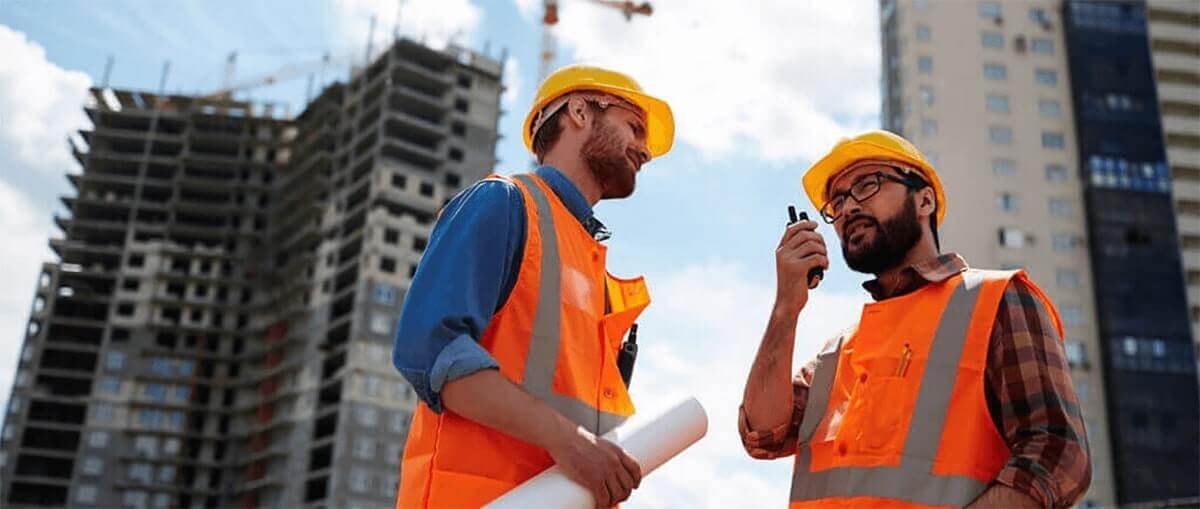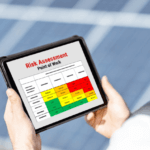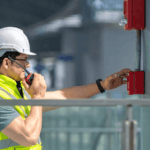
Top 10 Construction Safety Rules Every Worker Must Know
Construction sites are bustling hubs of activity, where skilled workers bring towering structures and intricate designs to life. However, amidst the cacophony of hammers, drills, and heavy machinery, safety should always remain the top priority. In the construction industry, adhering to safety rules isn’t just a recommendation; it’s a fundamental requirement for protecting lives and ensuring the success of every project.
In this article, we’ll explore the essential construction safety rules that are critical for professionals in the industry. By following these rules, you can prevent accidents, save lives, and make your projects safer and more successful.
Let’s get started with the basics of construction safety.
Here are the top 10 construction safety rules:
- Wear appropriate PPE.
- Follow proper equipment and machinery safety procedures.
- Maintain a clean and organized work environment.
- Use fall protection measures when working at heights.
- Properly store and handle hazardous materials.
- Follow electrical safety guidelines.
- Communicate effectively with team members.
- Inspect and maintain tools and equipment regularly.
- Follow proper excavation and trenching safety procedures.
- Have a clear emergency response plan in place.
Let’s now dive in to each of them in detail:
1. Wear Appropriate PPE:
Your first line of defense in construction is Personal Protective Equipment (PPE). From hard hats that shield your head to steel-toed boots guarding your feet, these items are your safety essentials. Always don the right PPE before setting foot on the construction site. It’s not just a rule; it’s your lifeline.
2. Follow Proper Equipment and Machinery Safety Procedures:
Machinery can be unforgiving. Know the equipment you’re working with and the safety procedures inside out. Keep machinery well-maintained, and never bypass safety features. One mistake can lead to severe consequences. Safety starts with understanding your tools.
3. Maintain a Clean and Organized Work Environment:
A cluttered site is an accident waiting to happen. Keep your workspace tidy, with tools and materials organized. Remove tripping hazards and ensure clear walkways. A clean and organized site not only prevents accidents but also boosts efficiency.
4. Use Fall Protection Measures When Working at Heights:
When working at heights, fall protection is a must. Harnesses, guardrails, and safety nets can save lives. Never take chances with heights; one slip can lead to a tragic fall. Safety rules at elevated work sites are there for a reason.
5. Properly Store and Handle Hazardous Materials:
Hazardous materials require careful handling. Store them as per regulations, label them clearly, and use them safely. Chemical accidents can have long-lasting effects. Protect yourself and your colleagues by following safety protocols diligently.
6. Follow Electrical Safety Guidelines:
Electricity is a silent danger on construction sites. Follow electrical safety rules rigorously. Keep cords in good condition, avoid overloading circuits, and use Ground Fault Circuit Interrupters (GFCIs). One shock can be one too many.
7. Communicate Effectively with Team Members:
Clear and timely communication is the backbone of safety. Use signals, radios, or any other means necessary to ensure everyone is on the same page. Miscommunication can lead to accidents and confusion. Work as a team, and prioritize safety through effective communication.
8. Inspect and Maintain Tools and Equipment Regularly:
Faulty tools and equipment are accidents waiting to happen. Regular site inspections and maintenance are vital. Don’t assume someone else will check; take responsibility for the tools you use. A well-maintained tool can make your job easier and safer.
9. Follow Proper Excavation and Trenching Safety Procedures:
Excavations and trenches are high-risk areas. Shoring, sloping, or shielding are necessary safety measures to prevent collapses. Always identify utility lines and follow safe excavation practices. Safety down in the trenches is as crucial as on the ground.
10. Have a Clear Emergency Response Plan in Place:
In emergencies, every second counts. Have a well-defined emergency plan that includes evacuation procedures, first-aid locations, and contact information for medical assistance. Knowing what to do in a crisis can make all the difference. Be prepared, be safe.
These ten construction safety rules are your guide to a secure and successful construction career. Remember, they’re not just guidelines; they’re a pledge to keep you and your colleagues safe on the job.

Ramesh Nair is the Founder and Principal Partner of Niyati Technologies, the company behind Safetymint.
He’s a dedicated advocate for workplace safety. Ramesh firmly believes that every individual deserves to return home safely after a day’s work. Safetymint, the innovative safety management software, emerged from this conviction. It’s a platform designed to streamline safety management, empower safety professionals, and enhance safety in workplaces.
Through his blog, Ramesh shares insights, best practices, and innovative solutions for workplace safety. Visit his social media profiles to follow him for regular updates.



